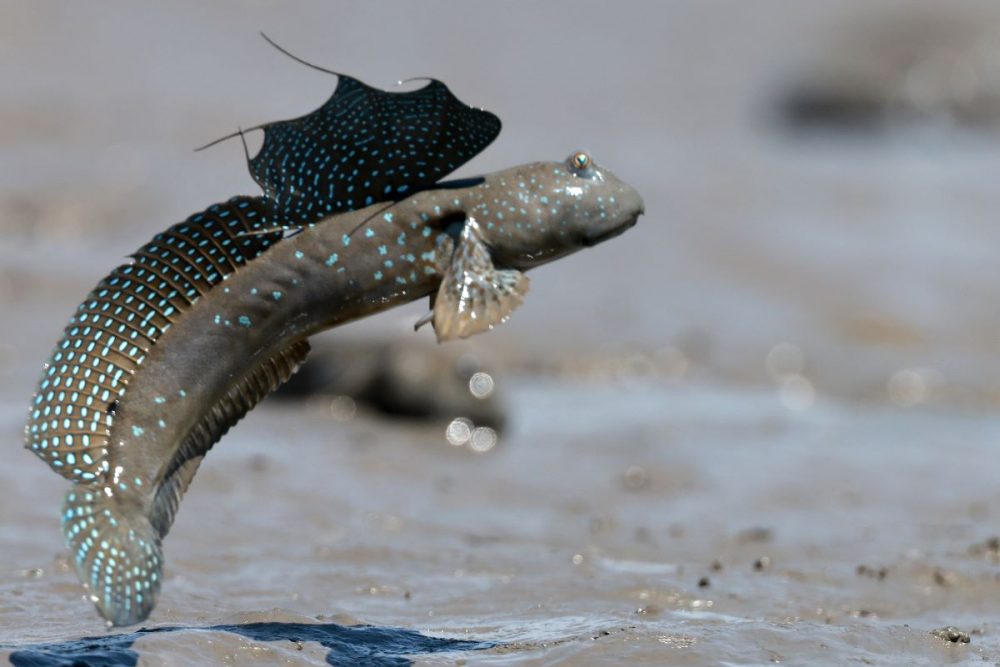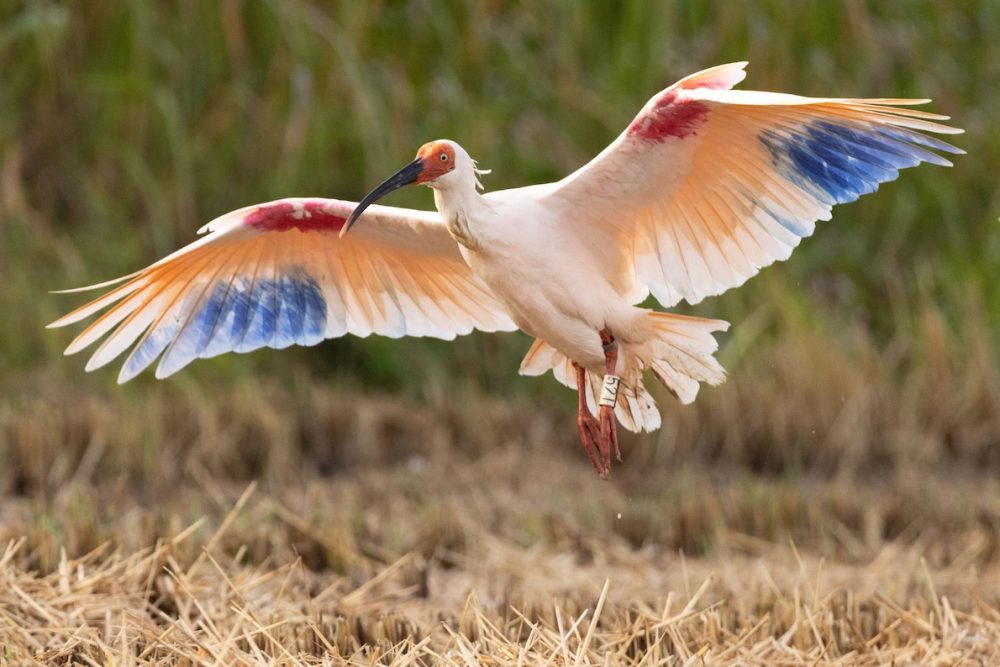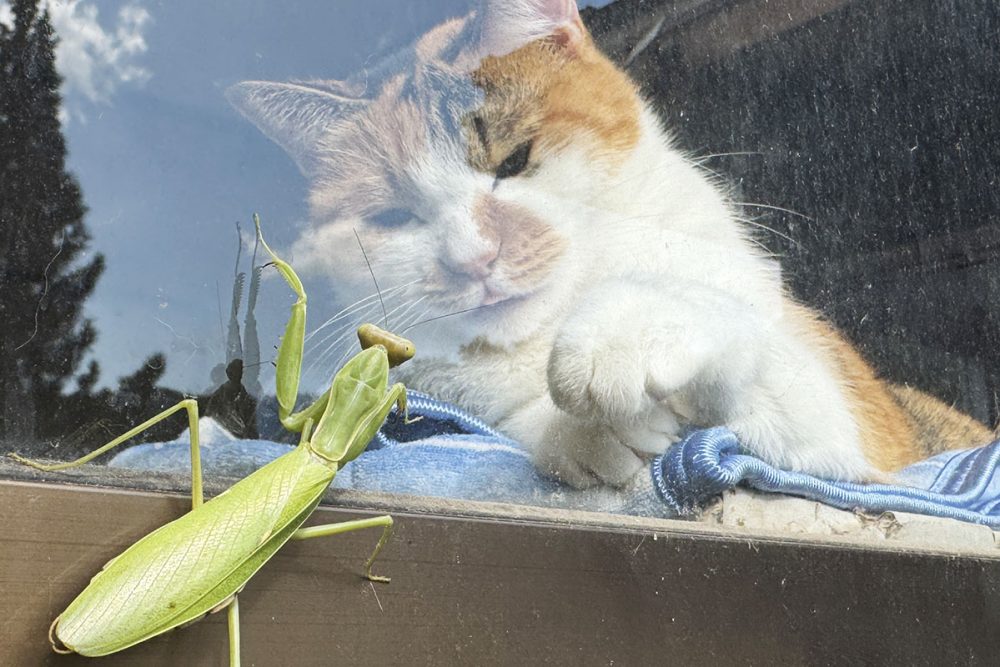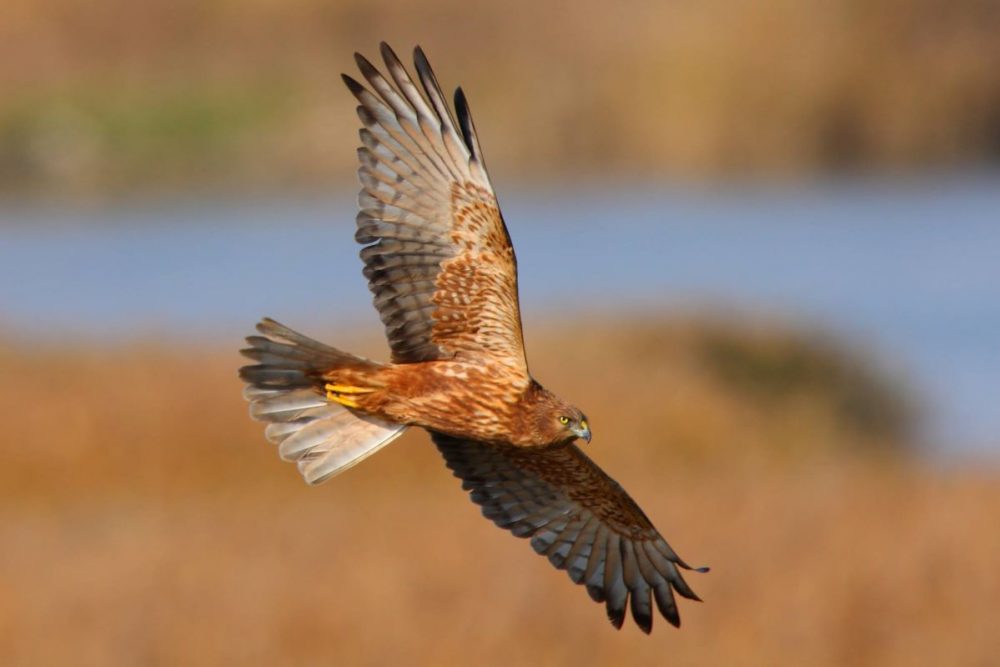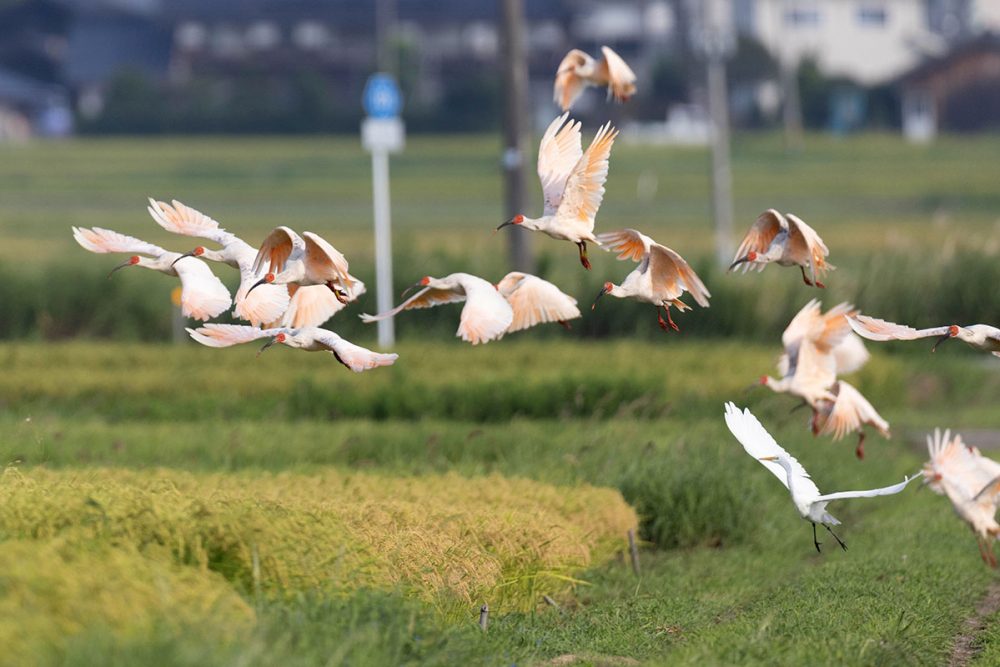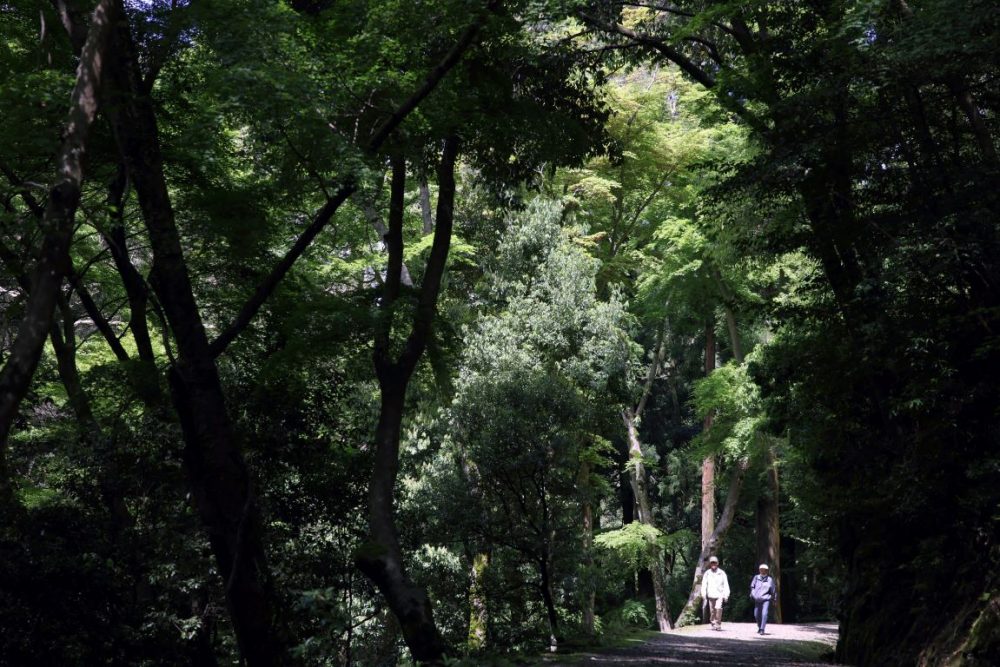[Sado Wildlife in Focus] The Crested Ibis in the Tapestry of Autumn's Colors
Fumie Oyama's third photo essay series features the Japanese crested ibis in beautiful contrast with Sado Island's magnificent autumn colors.
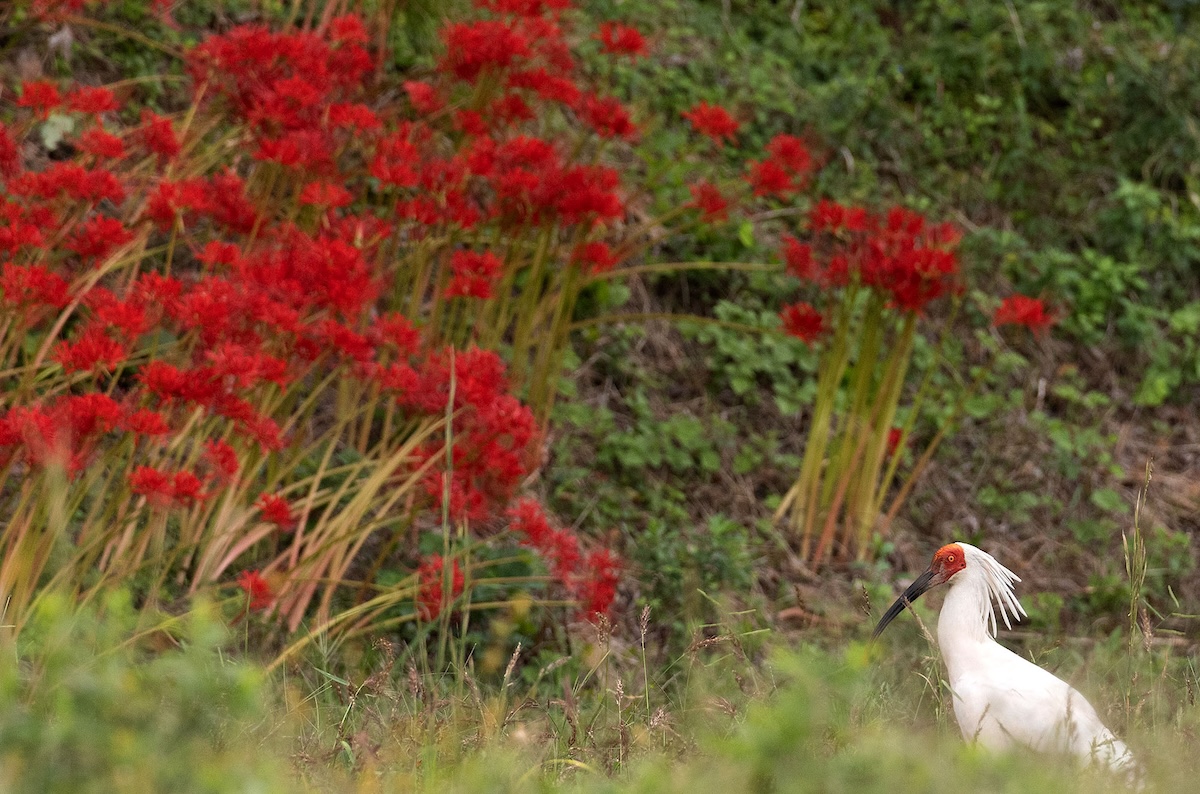
このページを 日本語 で読む
The intense heat and lack of rain have passed along with summer. Autumn has arrived on Sado Island in the Sea of Japan off Niigata Prefecture. Often called the season of the arts, autumn is the perfect time to see the plumage of the crested ibis at its most beautiful. Designated as a national natural treasure, the ibis is even more striking against a backdrop of gorgeous autumn colors and scenery.
Beautiful Autumn Colors
Autumn is both colorful and magnificent. Persimmons sparkle in the sunlight, and autumn leaves paint the fields and mountains in a vibrant tapestry. Chestnuts and other fruits of nature colorfully adorn the island, making it the best season for photography.
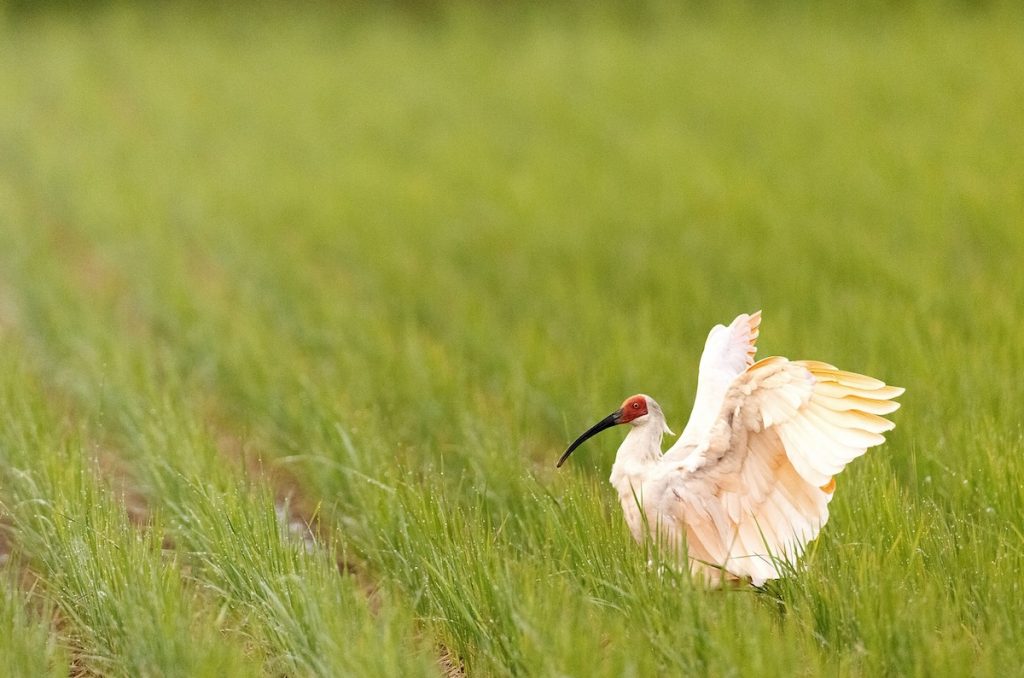
This year's oppressive heat was not only physically taxing, but also brought a shimmering haze that made it difficult to take good photographs. Now the mornings and evenings are cooler. I am grateful for the arrival of this more pleasant season as wait patiently to capture the best moments of the crested ibis.
Gray for Protection
The crested ibis, called toki in Japanese, is the inspiration for the name of a color. While most of the ibis's feathers are white, the larger wing and tail quill feathers are an orange-tinged pink, called toki-iro. And this beautiful color can be seen for only about three months of the year.
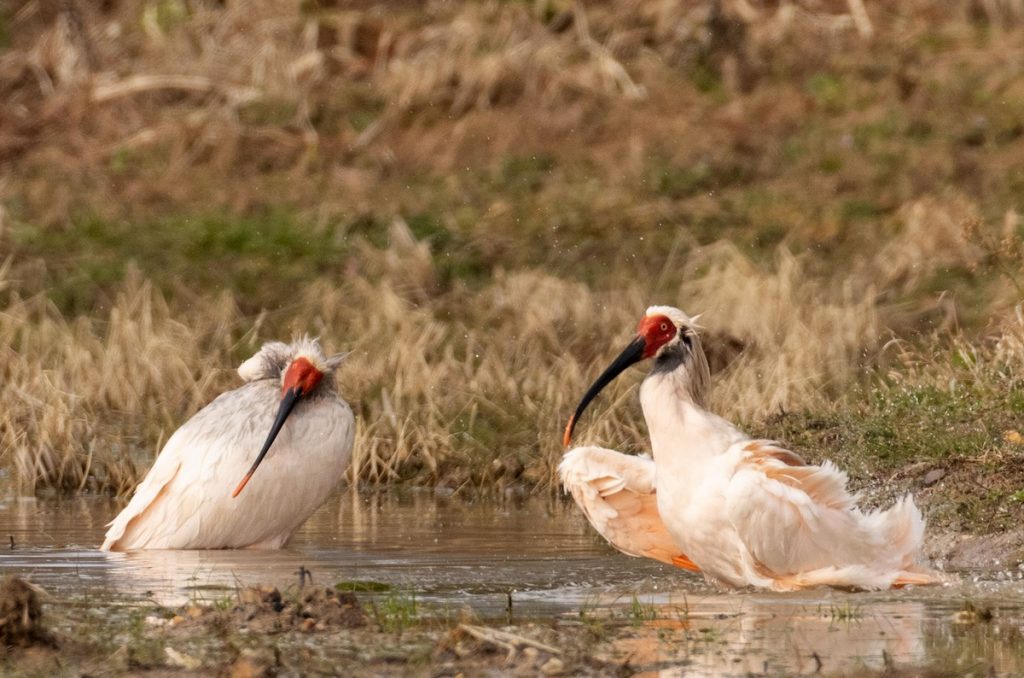
Before the breeding season begins around February, a black powdery substance is formed on the skin around the neck of the crested ibis. The bird rubs this powder onto its body after bathing, turning its feathers gray.
This phenomenon is thought to stem from the need to indicate the capacity for reproducing, as well as to provide a protective color for nesting. Interestingly, this behavior is said to be unique to the crested ibis.
Non-Native Species in the Landscape
The colorful nature of Sado is the ideal backdrop for the beautiful crested ibis. After the rice harvest, rice plants in the paddies sprout from the roots again, creating fresh green fields that make it appear as if it were early summer again. Fluffy buckwheat flowers paint the satoyama landscape white.
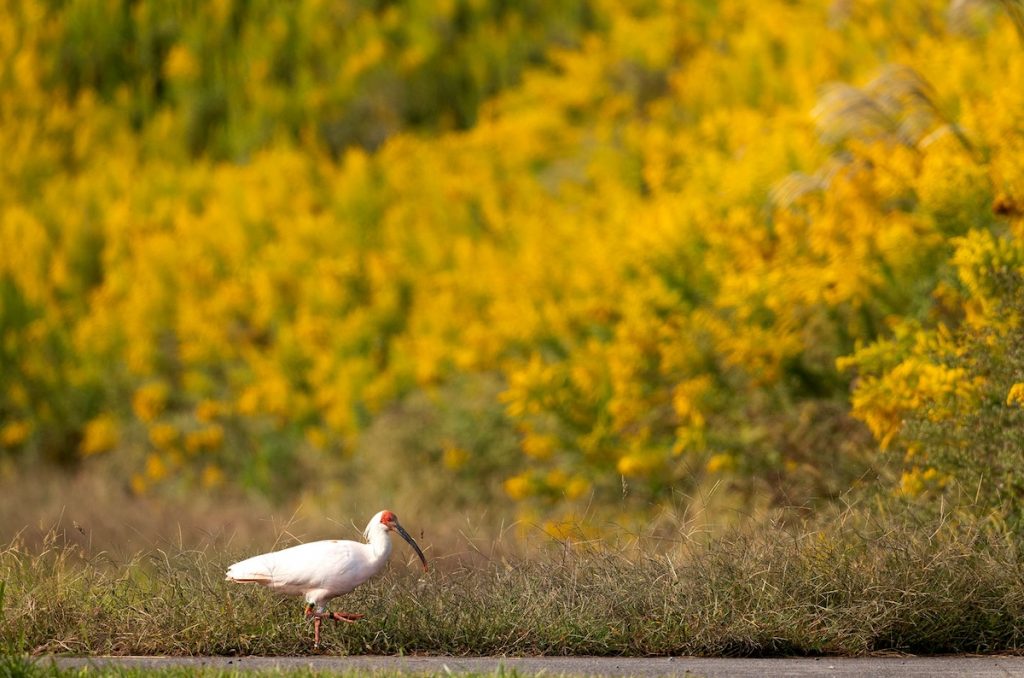
Although a non-native species, the bright yellow Canada goldenrod has become a common sight in Sado Island's landscape. Native to North America, the goldenrod belongs to the Asteraceae family. A large perennial, it was frowned upon in the past as a cause of hay fever. However, this is a misconception. The culprit in hay fever is ragweed, another member of the Asteraceae family.
The goldenrod is an extremely stubborn plant that continues to grow despite efforts to exterminate it. It releases a chemical that inhibits the growth of rival native species, such as silver grass. Thus it was thought to destroy native species.
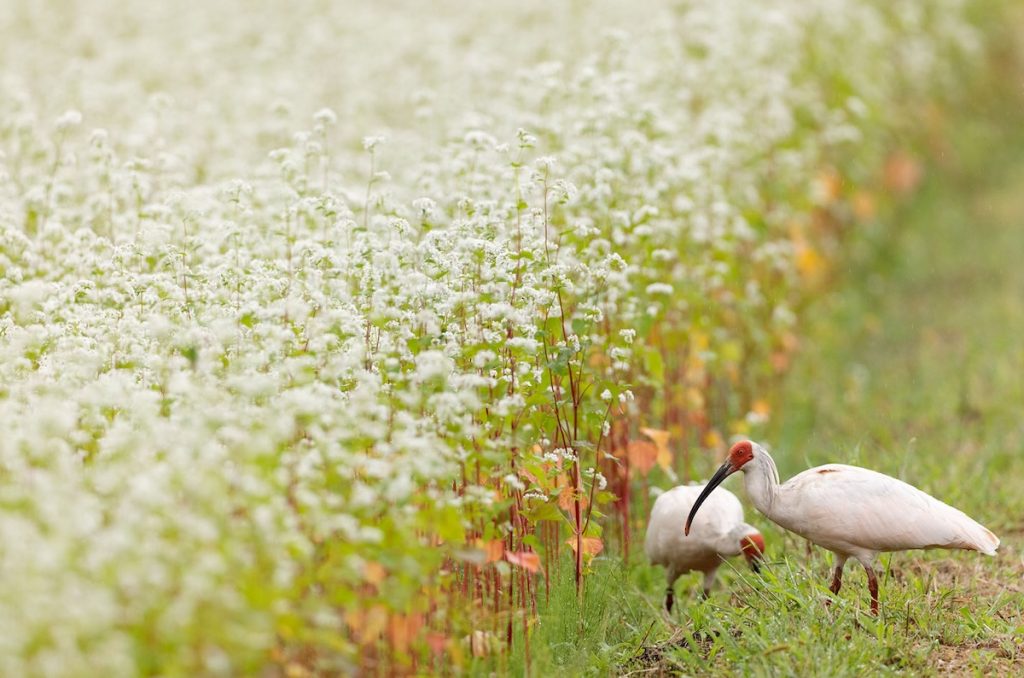
However, it seems that when this chemical accumulates in the soil in certain concentrations, it causes autotoxicity. For this reason, instead of destroying native species as was feared, the firmly-rooted goldenrod has coexisted in Japan.
The goldenrod's bright yellow flowers and the crested ibis stand in beautiful contrast. But it is a scene that represents the complex situation of flora in a satoyama.
The island's colorful autumn season is short-lived. The signs of winter are already just around the corner.
Click here to read more Sado Wildlife in Focus photo essays by photojournalist Fumie Oyama.
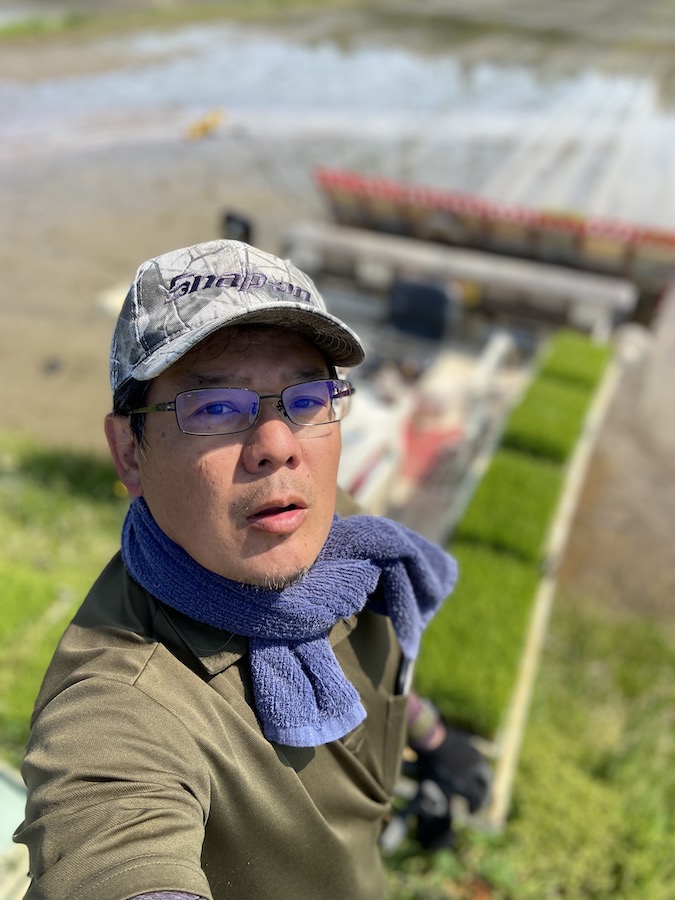
Fumie Oyama is a two-time winner of the Japan Newspaper Publishers & Editors Association Award as a photographer for the Sankei Shimbun. After covering the reintroduction of the crested ibis to the wild for 11 years, Oyama left the company in 2020 to move to Sado Island. There, he continues to photograph the ibis and other wildlife while engaging in farming. He currently promotes the charms of Sado Island as a photojournalist. Follow Fumie Oyama on Instagram.
このページを 日本語 で読む






